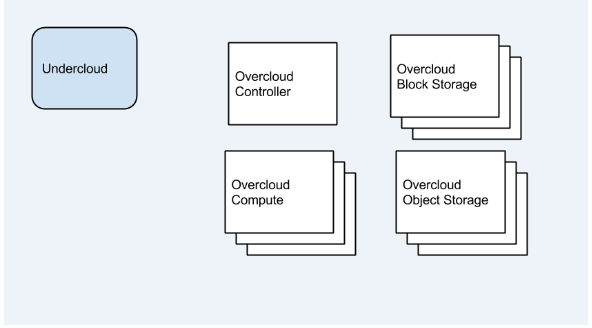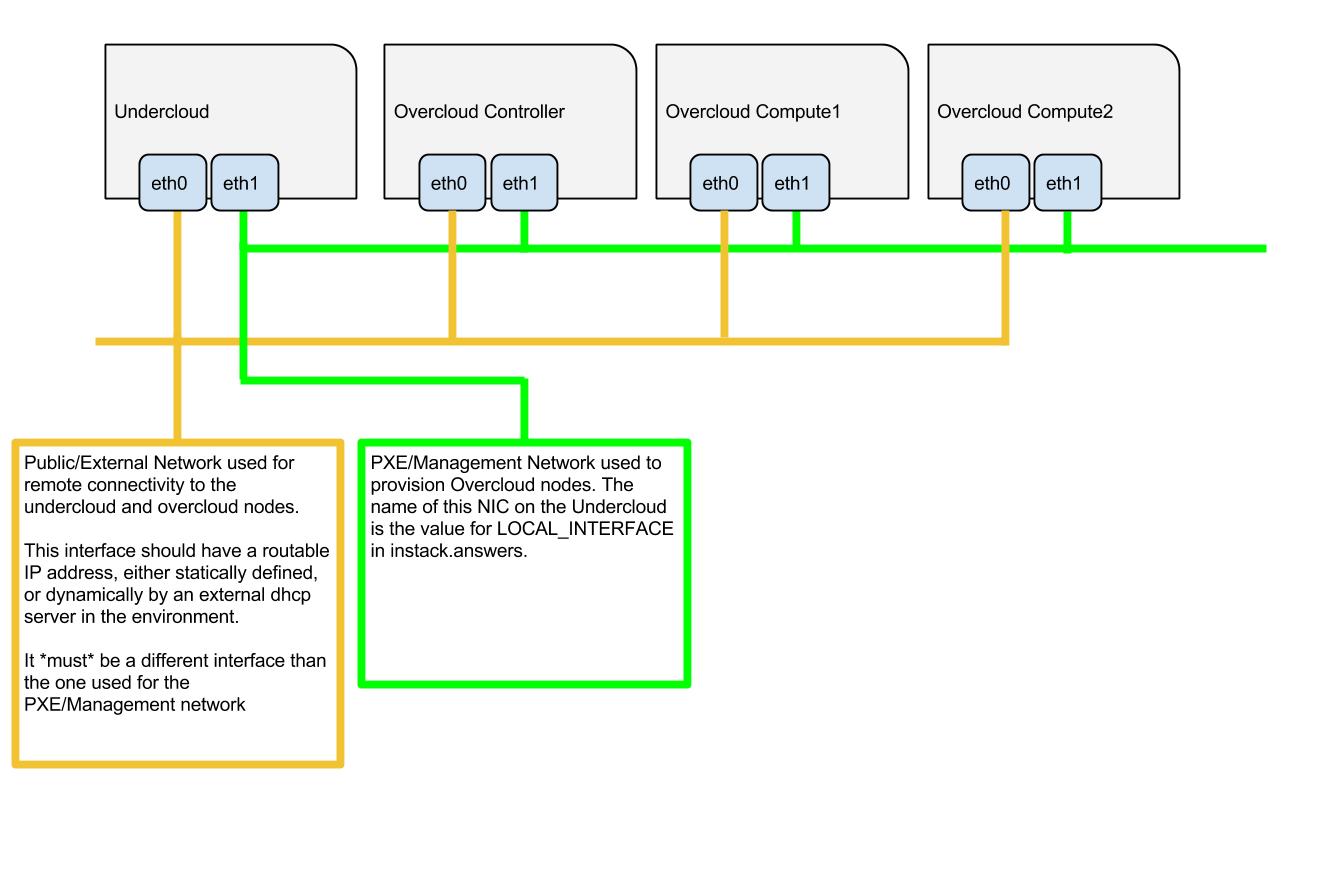Some of the steps from the undercloud setup were duplicated on the baremetal page. Instead, move the one baremetal-specific step to the undercloud page and note that it only needs to be done for baremetal setups. Change-Id: I5998038c74aeac59f27ebd7a6311d3af0aa0539c
4.4 KiB
Baremetal Environment Setup
instack-undercloud can be deployed in an all baremetal environment. One baremetal node will be used as the undercloud, and other available baremetal nodes will be used for the Overcloud deployment.
Minimum System Requirements
In order to produce a usable OpenStack install this setup requires five baremetal machines: one machine for the undercloud, and one machine for each Overcloud node.
The setup requires baremetal machines with the following minimum specifications:
- multi-core CPU
- 4GB memory
- 60GB free disk space
The undercloud machine needs to run RHEL 7.1 x86_64, which is discussed more below.
Preparing the Baremetal Environment
Networking
The overcloud nodes will be deployed from the undercloud machine and therefore the machines need to have have their network settings modified to allow for the overcloud nodes to be PXE boot'ed using the undercloud machine. As such, the setup requires that:
- All overcloud machines in the setup must support IPMI
- A management provisioning network is setup for all of the overcloud machines. One NIC from every machine needs to be in the same broadcast domain of the provisioning network. In the tested environment, this required setting up a new VLAN on the switch. Note that you should use the same NIC on each of the overcloud machines ( for example: use the second NIC on each overcloud machine). This is because during installation we will need to refer to that NIC using a single name across all overcloud machines e.g. em2
- The provisioning network NIC should not be the same NIC that you are using for remote connectivity to the undercloud machine. During the undercloud installation, a openvswitch bridge will be created for Neutron and the provisioning NIC will be bridged to the openvswitch bridge. As such, connectivity would be lost if the provisioning NIC was also used for remote connectivity to the undercloud machine.
- The overcloud machines can PXE boot off the NIC that is on the private VLAN. In the tested environment, this required disabling network booting in the BIOS for all NICs other than the one we wanted to boot and then ensuring that the chosen NIC is at the top of the boot order (ahead of the local hard disk drive and CD/DVD drives).
- For each overcloud machine you have: the MAC address of the NIC that will PXE boot on the provisioning network the IPMI information for the machine (i.e. IP address of the IPMI NIC, IPMI username and password)
Refer to the following diagram for more information
Setting Up The Undercloud Machine
Select a machine within the baremetal environment on which to install the undercloud.
Install RHEL 7.1 x86_64 on this machine.
If needed, create a non-root user with sudo access to use for installing the Undercloud:
sudo useradd stack sudo passwd stack # specify a password echo "stack ALL=(root) NOPASSWD:ALL" | sudo tee -a /etc/sudoers.d/stack sudo chmod 0440 /etc/sudoers.d/stackCreate a json file describing your baremetal nodes. For example:
{ "nodes":[ { "pm_type":"pxe_ipmitool", "mac":[ "fa:16:3e:2a:0e:36" ], "cpu":"2", "memory":"4096", "disk":"40", "arch":"x86_64", "pm_user":"admin", "pm_password":"password", "pm_addr":"10.0.0.8" }, { "pm_type":"pxe_ipmitool", "mac":[ "fa:16:3e:da:39:c9" ], "cpu":"2", "memory":"4096", "disk":"40", "arch":"x86_64", "pm_user":"admin", "pm_password":"password", "pm_addr":"10.0.0.15" }, { "pm_type":"pxe_ipmitool", "mac":[ "fa:16:3e:51:9b:68" ], "cpu":"2", "memory":"4096", "disk":"40", "arch":"x86_64", "pm_user":"admin", "pm_password":"password", "pm_addr":"10.0.0.16" } ] }

